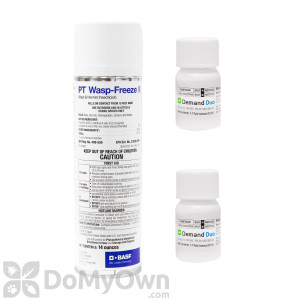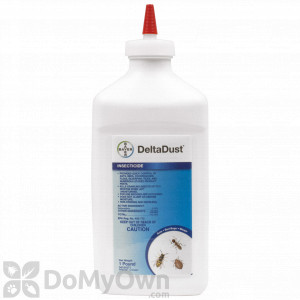What Do Hornets Look Like
By DoMyOwn staff
The category of "wasp" includes the common paper wasp, hornets, and yellow jackets. The following identifiers describe the hornet wasp:
- Hornets are ½" to 1" long.
- Hornets have a narrow waist with long legs and a stinger.
- Hornets have a black thorax and abdomen marked with white or bright yellow markings.
- Hornets construct a paper-like nest that looks like a large, inverted tear-shape.
Behavior & Habitat
Hornet wasps are social insects and live in colonies. Hornet wasp colonies contain three castes: workers, males, and queens. Hornet nest are most often found attached to a bush, tree, or the side of a building. They may also be found in hollow walls, attics, and barns. The color of a hornet nest is typically brownish, differing from the gray color of paper wasp and yellow jacket nests.
Feeding Habits
Adult hornet wasps feed mainly on nectar and other sugary substances such as honeydew and the juices of other fruits. Hornet wasps feed their young an almost exclusive diet of partially chewed insect parts, including caterpillars and flies.
Life Cycle
Fertilized queen wasps usually emerge from stumps, hollow logs, in leaf litter and soil cavities during the early spring. A nest site is selected and a paper nest is built wherein the eggs can be laid, one in each hexagonal cell. Older larvae reside in the center with the younger larvae near the edges. The queen will begin feeding the larvae as soon as the eggs hatch. The larvae remain in their cells which are soon covered with silk domes, where they will form pupae. Finally, small infertile female wasps will emerge as "workers" during mid-June to take on the tasks of foraging for food, nest expansion, taking care of the queen, and defending the colony.
Damage
Hornet wasps have a lance-like stinger and can sting repeatedly. The sting of a hornet wasp can be very painful, and may even be fatal to particularly sensitive individuals. If reaction to a wasp sting seems unusual or severe in any way, you should contact a physician.
Basic Prevention & Control:
- Treat trouble areas with Suspend SC or Demon WP, applied with a low-pressure sprayer.
- Attack the Nest. To get quick knock-down of the nest, carefully approach the nest AT NIGHT (all the wasps should be inside sleeping and less aggressive) and spray CB 80 Extra aerosol into the nest opening. It is important to wear protective gear such as a long-sleeved shirt tucked into gloves, overalls, and eye and head protection.
- When a wasp approaches you, put your hands in front of your face and move away slowly. Never swing your arms or run as this may increase the chances being stung.
For more detailed information on Wasp prevention and control, see How to Get Rid of Wasps
50 of 66 people found this article informative and helpful.


